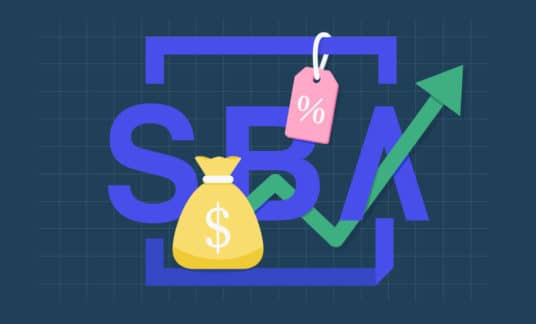Knowing how to value a small business is important for several reasons. You’ll need to assess the value of your small business when looking to borrow or land seed money from investors. Determining the value of a business can reveal the operation’s overall health. Valuing a business for sale will also ensure you get a fair deal if you decide to pass along your company to a new owner.
Let’s go through the different ways to value a company to help you make the best decisions for your business now and in the future.
Different Ways to Value a Company
There are numerous ways to find company valuation. Here are some business valuation models that are popular to find the information you’ll share with potential investors and buyers.
Discounted Cash Flow Method
This small business valuation method is based on future cash flow projections and the time value of money principle. The time value of money refers to money gaining value in the future. For example, $10,000 is saved and earns interest throughout the years.
The formula will include future cash projections and the discount rate, also known as the weighted average cost of capital (WACC). The WACC is “the cost of capital across all sources, including common shares … and debt,” according to the Corporate Finance Institute (CFI). Each type of capital’s cost is “weighted by its percentage of total capital, and then they are added together,” the CFI states.
This method has a risk of inaccuracy if the future cash projections don’t pan out over the years.
Profit Multiplier Method
When looking at how to value a small business based on profit, consider your price-to-earnings ratio and use the profit multiplier method.
This process involves looking at your company’s profits over time to project its potential future earnings. The value of your business is determined by multiplying your average annual profits by a determined amount of time.
(Note: The “multiplier” is based on various intangibles, such as your track record, industry trends and your company’s future growth potential. For small businesses, the number is typically anywhere from 3-5.)
-
Example
If your business made $100,000, $200,000 and $300,000 in profit over 3 consecutive years, take the average — $200,000 — and multiply it by 4 (a standard multiplier for a business in good standing).
$200,000 x 4 = $800,000
Your company’s selling price is $800,000 according to the profit multiplier method.
Note:
- You may only need to calculate your average profit for recent years (from 3-5 years, depending on individual circumstances). Focus on the years your business has been operating at its current standard. This will provide a more accurate picture of your company’s worth.
- Factor in your seller’s discretionary earnings (SDE), such as owner compensation, as well as earnings before interest and taxes (EBIT) and earnings before interest, tax, depreciation and amortization information (EBITDA).
This method is helpful when you’re just getting started with how to value a business. However, its simplicity means that it might not be as accurate as other valuation methods.
Times-Revenue Method
This tactic is similar to the profit multiplier method, but instead of using average profits, you’ll find the company value based on revenue.
When calculating your business’s revenue-based value, you’ll assign a similar multiplier (2-4 for successful businesses, 1 or even lower for struggling companies) to its overall SDE.
Note that companies with low overhead are more likely to benefit from the times-revenue method because their revenue and profit numbers could be similar.
-
Business Valuation Calculator
When you’re determining the value of a business, using a business valuation calculator can help reveal the overall financial picture. Search the web, and you’ll find different websites that have this tool — from CalcXML to BizEx, to Western & Southern Financial Group, among others. You’ll find the methodology can be different for each small business value calculator. Some sites will use the multiple of earnings method, and others will employ the discounted cash flow method, for example.

How to Prepare for Small Business Valuation
Whether you’re looking for investors or valuing a business for sale, go through the following steps to the small business valuation preparations:
1. Collect Your Company’s Financial Information
To value your small business, gather the following records:
- Income statements
- Cash-flow statements
- Balance sheets
- SDE statements
Your income and cash-flow statements show how much money your business generates and can give you an idea of what the company will be worth in the long run.
2. Collect Other Relevant Documents
In addition to your financial paperwork, especially if you’re valuing a business for sale, you’ll likely need the following:
- Business licenses and permits
- Insurance policies
- Business history (e.g., founding date, changes throughout the years)
- Leases or other real estate documents
- Professional certifications
- Vendor or client contracts
3. List and Determine the Value of Your Assets
Next, you need to know how much value your tangible and intangible assets add to your company’s worth.
Your tangible assets, including equipment, securities and inventory, will be listed in your financial documents, but don’t forget your intangible assets.
These assets, such as your brand reputation and patents or trademarks, also contribute to your small business valuation.
4. Compare Asking Prices to the Norm
When you’re determining the value of a business, you’ll want to see how your rough estimate compares to businesses similar to yours (regarding the industry, business age, etc.).
You can browse online marketplaces — such as BizQuest and BizBuySell — where business owners list their companies for sale. Take note of the businesses’ asking prices and, if available, potential bid amounts.
A third-party consultant can help you value your business objectively as well as based on the market’s current status.









